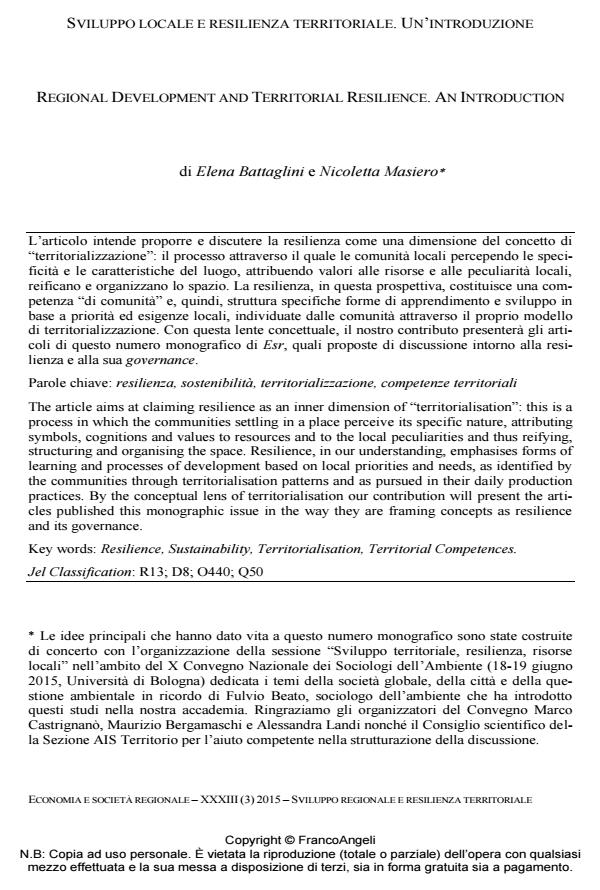Regional development and territorial resilience. An introduction
Journal title ECONOMIA E SOCIETÀ REGIONALE
Author/s Elena Battaglini, Nicoletta Masiero
Publishing Year 2016 Issue 2015/3
Language Italian Pages 18 P. 5-22 File size 254 KB
DOI 10.3280/ES2015-003001
DOI is like a bar code for intellectual property: to have more infomation
click here

FrancoAngeli is member of Publishers International Linking Association, Inc (PILA), a not-for-profit association which run the CrossRef service enabling links to and from online scholarly content.
The article aims at claiming resilience as an inner dimension of "territorialisation": this is a process in which the communities settling in a place perceive its specific nature, attributing symbols, cognitions and values to resources and to the local peculiarities and thus reifying, structuring and organising the space. Resilience, in our understanding, emphasises forms of learning and processes of development based on local priorities and needs, as identified by the communities through territorialisation patterns and as pursued in their daily production practices. By the conceptual lens of territorialisation our contribution will present the articles published this monographic issue in the way they are framing concepts as resilience and its governance.
Keywords: Resilience, Sustainability, Territorialisation, Territorial Competences.
Jel codes: R13; D8; O440; Q50
- Resilience in action: The bottom up! architecture festival in Turin (Italy) Cristina Coscia, Angioletta Voghera, in Journal of Safety Science and Resilience /2023 pp.174
DOI: 10.1016/j.jnlssr.2022.10.005 - New Metropolitan Perspectives Cristina Coscia, Angioletta Voghera, pp.1091 (ISBN:978-3-031-06824-9)
- Commoning of territorial heritage and tools of participated sustainability for the production and enhancement of agro-environmental public goods G. Fabiola Safonte, Claudio Bellia, Pietro Columba, in Agricultural and Food Economics 10/2021
DOI: 10.1186/s40100-021-00180-w - Innovazione territoriale e agricoltura urbana. Introduzione al tema Elena Battaglini, in ECONOMIA E SOCIETÀ REGIONALE 2/2016 pp.5
DOI: 10.3280/ES2016-002001
Elena Battaglini, Nicoletta Masiero, Sviluppo locale e resilienza territoriale. Un’introduzione in "ECONOMIA E SOCIETÀ REGIONALE " 3/2015, pp 5-22, DOI: 10.3280/ES2015-003001